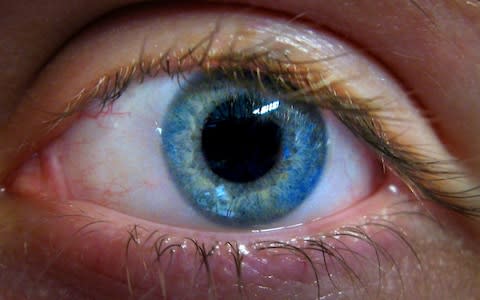Is our obsession with massive TVs ruining our eyesight?

“If you stare at screens too much, you’ll get square eyes.” So the naysayers have been claiming ever since television was first invented back in the late 1920s.
Fast forward 90 or so years and our eyes remain stubbornly round. But that’s not necessarily to say that screens don’t have the capacity to damage our eyes. According to a 2016 survey, by 2050 around half the world’s population will need glasses, compared to about a third now. Could televisions be the problem?
Thanks to Netflix, Amazon Video, and catch-up services like BBC iPlayer, we can gorge ourselves on television and films for hours on end, without ever needing to stop and wait for the next episode. Not only that, but the televisions we're watching all this content on are getting bigger too.
According to John Lewis & Partners’ annual How We Shop, Live and Look report the size of the average household TV set has grown by around 50pc since 2010.
Back then, the fastest selling size of TV set was 36 inches. By 2018, the fastest selling average size was 70 inches as more people invest in large, high definition 4K televisions.

And that trend looks set to continue with the new 8K televisions hitting the market and offering even bigger and better definition than ever before. The smallest 8K television available at the moment is Samsung’s 65 inch model, but sizes go all the way up to 85 inches.
Of course, with televisions getting larger and living rooms staying the same, people are seeing more of their TVs than ever before. In fact, at a recent showcase for Samsung’s 8K television line-up, one representative told the Telegraph that these TVs were designed to be viewed from up close.
The recommended viewing distance of a 24 inch television is just under two metres, but a 65 inch TV can require a viewing distance of over four metres. But the average viewing distance has remained around the two metre mark.
But if the conventional wisdom is to be believed, that’s got to be terrible for our eyes, hasn’t it? Well, not necessarily, says Meena Ralhan, optometrist & optical compliance officer at Vision Express.
“[With large TVs] you're getting more eye strain, fatigue, dry eyes, but it's not going to give you permanent damage. However, things that you may not notice are happening and viewers don't really realise their TVs could be causing it.”
This is generally because staring at a screen causes you to blink less. Blinking allows your eyes to regenerate a tear film which is important to protect your eyes. Blink less and your eyes will feel itchy and strained.

“Larger TVs mask a lot of refractive error,” explains Ralhan. The TV isn’t causing the damage to your eyes as such, but because you’re able to sit so close to it, you won’t notice the damage which is already there. Same with a mobile phone which you’d just naturally hold closer to your face if you had an eye problem that made it difficult to see.
Watching big televisions up close can also cause another issue: the muscle which controls your far-sightedness isn’t getting enough of a work out, leading to short-sightedness. Vision Express recommends a simple 20-20-20 rule. Every 20 minutes of screen time spend 20 seconds looking at something 20 feet away. “Get that far muscle working nice and smoothly so your eyes get used to adapting and they don't get settled into a refractive error,” says Ralhan.
So while your massive television screen might not actually be giving your square eyes, there’s a good reason why the two have become interlinked. None of the issues caused by staring at large screens are permanent but noticing them might lead to a visit to an optometrist, who might be able to point out an entirely separate pre-existing condition leading you to wearing glasses.
The best thing to do, says Ralhan, is to stop blaming TVs and just go to an optometrist yourself. Adults should get their eyes tested every two years. “Having an eye test doesn't mean somebody's trying to get you into glasses, there's a lot you can pick up in terms of your eye health; picking up dry eyes, headaches. Lots of your systemic health can be picked up from an eye test. We can pick up diabetes, blood pressure, and occasionally even tumours.”

 Yahoo News
Yahoo News 